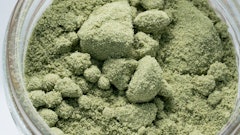
_fmt.png?auto=format%2Ccompress&fit=max&q=70&w=400)
As new products and brands flood the cannabis market, everyone is looking for a competitive edge and a way to differentiate themselves. Incorporating food safety into your company’s strategy is part of the answer. It might not be your first thought, but once food safety practices gain momentum in your company, you will be hard-pressed to continue operating without them. (In fact, if you are operating a kitchen, they are necessary.) The benefits of implementing such practices become more tangible as your company consistently produces premium edible products, thus strengthening your brand and reputation. Here are six food safety and quality program practices you can introduce into your operation to help consistently produce premium product.
1. Flow Charts
Flow charts are graphical representations of production material's movement from incoming to outgoing. Recorded flow charts allow for a smoother production sequence by allowing you to work through any inefficiencies in the process. Improving your production flow also allows for more research and development for future products. Flow charts typically start with the receipt of raw materials and include inventory and storage, all processing steps (preparation, cooking, cooling, etc.), packaging, labeling and distribution.
2. Hazard Analysis and Critical Control Points (HACCP) Plan
A hazard analysis and critical control points (HACCP) plan is a systematic, preventative approach to pinpoint hazards with the highest risk of compromising food safety in the production process, in terms of severity and likelihood. Critical control points are process steps where essential measures (like cooking to a specific temperature for a minimum amount of time) are put in place to minimize food safety hazards. Inherently, applying the HACCP system to your process will minimize the risk of food safety setbacks and ensure your product's integrity. Training on how to properly develop a HACCP plan is available via online or on-site courses.
3. Supplier Approval Program
A supplier approval program (SAP) is a supplier assessment that will help address any concerns prior to your first purchase and throughout your relationship with the supplier. Common questions asked during the assessment include whether the supplier has sanitation standard operating procedures (SSOPs), employee hygiene protocols, pest control programs, and a recall process in place. (You can find sample SAP questionnaires online.) A strong SAP ensures you are using premium ingredients (including packaging). Advantages of a written SAP include:
- identifying supplier risks,
- optimizing performance,
- creating relationships, and
- protecting your brand.

4. Standard Operating Procedures (SOPs)
SOPs are documents establishing the proper sequence for carrying out a task. SOPs are a handy training tool, but they also serve as a reference when troubleshooting issues. A template helps ensure that all SOPs relay the same basic information such as purpose, materials needed, last revised date and any related documents. Having a consistent process leads to producing consistent product.
5. Internal Testing
Internal testing standards are methods used to check product at specified process steps. Creating internal testing standards for each process step allows for more immediate issue identification and corrective action. Examples of internal testing tools that can help build consistent processes and checks include:
- color palette to visualize if the product is showing the correct hue,
- scent screening to distinguish if the product is developing the correct aroma, or
- viscosity analysis to discern if the product is refining to the correct texture.
6. Recall Program
A recall program is a written action plan to remove from dispensary shelves any products determined to be unsafe. While you hope to never issue a recall, it is best to be prepared. Researching ahead of time will be crucial for a quick response to a recall trigger. Figure out:
- whom to contact,
- what information is needed,
- why the recall was triggered,
- when the products that were affected by the recall were made, and
- where the recall trigger occurred.
Once the recall is complete, you can focus on how to prevent it from happening again.




















